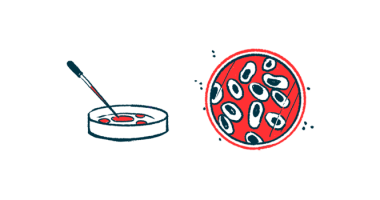Motion-Capture 3D Technology May Help Design Effective Therapies for Parkinson’s

University of Pennsylvania researchers used a new technology that mimics the way animated movies capture a person’s movement to show the different shapes of alpha-synuclein protein, which, when badly arranged, become toxic to neurons and trigger Parkinson’s disease.
The results advance researchers’ knowledge of the mechanisms leading to Parkinson’s, and may lead to the development of new, more efficient therapies.
The study, “Using a FRET Library with Multiple Probe Pairs To Drive Monte Carlo Simulations of α-Synuclein,” was published in the Biophysical Journal.
To function properly, proteins need to be arranged, or folded, in certain 3D structures, which vary according to what they need to do inside our bodies.
This spatial arrangement is so vital that when the process goes wrong by proteins folding into strange 3D structures, they can aggregate into toxic clumps leading, in the case of neurons, to the death of cells – the underlying cause of neurodegenerative diseases like Parkinson’s or Alzheimer’s.
Tracking how proteins fold and change shape would be highly advantageous to understand the basic processes underlying these diseases.
“One of the big fundamental questions in biochemistry is how proteins fold into a certain shape, and this is dictated by the sequence of amino acids in the protein. The information in all of the interactions of the amino acid side chains somehow leads to it folding into a proper shape,” E. James Petersson, an associate professor of chemistry at the university’s School of Arts and Sciences, said in a Penn News article by Ali Sundermier.
Researchers at Penn, along with colleagues at international research institutions, used a method similar to that used in animated movies, the motion-capture technology, where a person uses a tracking suit covered with small colored balls. A camera is connected to each ball, capturing each position the person makes and recording its movement.
To do the same for proteins, Penn’s researchers labeled the protein with fluorescent probes (like the small colored balls) to different positions of the protein.
They then tracked the fluorescence data, using a technique called fluorescence resonance energy transfer, in each position to reconstitute the protein structure in detail. In the end they were able to obtain atomic-resolution “movies” of the protein’s structure.
“There are a number of different techniques that can be used to do this, but we like fluorescence because you can acquire fluorescence data fast enough that you can actually watch proteins fold in real-time. Ultimately we’d like to try to watch proteins folding in cells,” Petersson said.
This fluorescence-tracking technology was used to study the alpha-synuclein protein, which misfolds and forms toxic clumps in Parkinson’s disease.
A total of 30 measurements of the alpha-synuclein protein were made under different conditions that cause the protein to change its shape. The data were later analyzed using one of the most advanced programs for modeling proteins, called Rosetta. The program was developed in the David Baker’s laboratory at the University of Washington.
“Rosetta is designed to model stable well-folded proteins,” Petersson said, “not disordered proteins that can change shape, so Jack had to do a lot of rewriting of the code himself to be able to model these unruly proteins.”
This study is the stepping stone for future work where researchers hope to use their new technique to model alpha-synuclein aggregates that cause neuronal death and assess how therapies may stop
the proteins’ folding to prevent this aggregation.
“We’re working on being able to generate model structures that actually show what is the effect of these drugs,” Petersson said. “We take the protein with the fluorescent labels, add the drug, allow the protein to change shape, make fluorescence measurements and then take those back to the computational modeling so we can actually see the structural effect of these drugs. Hopefully this will lead to more of a rational understanding so that better second and third generation drugs can be made.”
This method may lead to new imaging techniques that could be used for early detection of protein clumps.
“There are some promising drugs for treating neurodegenerative diseases such as Alzheimer’s and Parkinson’s, that could block this formation of aggregates, but the problem is that, by the time people show cognitive or motor-tremor symptoms, it’s too late to use these drugs because there’s already too much neurodegeneration,” Petersson explained.
“If you’re getting aggregates in your brain, even if you’re not showing any behavioral changes or learning deficits, these probes could noninvasively image the aggregates. By achieving a rational understanding of what the protein structure is, we hope we can help with that work moving forward,” he added.






